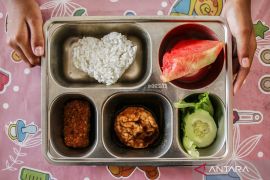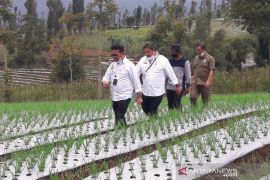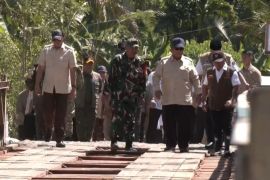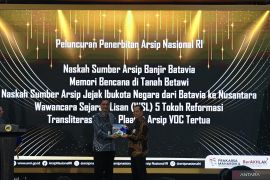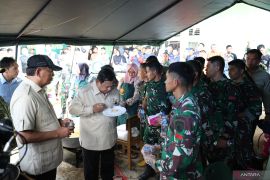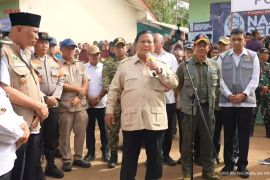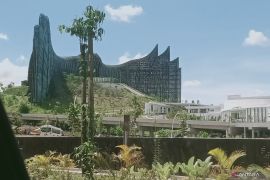"Smallholder`s agriculture which is small in scale but large in number should serve as the main basis and goal in the formulation of policies on food development in the country," Vice President Boediono said when observing the 31st World Food Day in Bone Bolango district, Gorontalo province on Thursday.
In Indonesia smallholders dominate the agricultural sector where the number of small farmers is big. The development of agriculture in the form of food estates aimed at producing vast and fast yields but ignoring small farmers will create social problems.
Therefore, the efforts to increase large scale agricultural products should be made through synchronizing the development of food estates and that of smallholders.
"We should prevent dualism in the development of agriculture so that it would not create bad social economic impacts," Vice President Boediono.
In order to encourage the productivity of smallholders in cultivating their agriculture, simple technological innovations that would be disseminated to and could be used by the farmers should be found. In this case research and development on technological innovation for agriculture needed to continuously be carried out.
After all, Indonesia is now launching a program to achieve a food surplus of 10 million tons and this program urgently needs the support of both food estates and small farmers. For this purpose, Agriculture Minister Suswono has said that Indonesia needs the support of more land to achieve the target.
"Actually, it is easy for us to achieve the surplus target if it is only rice but if it includes other commodities such as sugar, soybean or maize, we will need new agricultural lands," the minister said on the sidelines of the 33rd ASEAN Ministerial Meeting on Agriculture and Forestry (AMAF) recently.
The statement reaffirmed the government`s previous commitment to continuously boosting its annual rice and maize production so that its food self-sufficiency target would be achieved in 2014.
"For soybean alone we will need 500 thousand hectares of new land while for sugar we will need at least 350 thousand hectares," he said.
The agriculture minister said earlier that the government had begun the development of new agricultural land in Indonesia.
"For agriculture, we have started to develop one in Bulungan district, in East Kalimantan," the minister said on Wednesday.
With an estimated number of population at 237 million, Indonesia`s average per capita rice field is only about 500 meters. This only accounts for about 50 percent of that of Vietnam which reaches 1,000 meters per capita.
To increase the country`s food production, the agriculture ministry would use the 2012 budget allocation totaling Rp17.8 trillion .
"So the rise in the budget allocation by Rp600 billion will be primarily used to increase rice production," Suswono said.
He said although priority would be given to increasing rice production it did not mean that other food crops would be neglected.
The government will also allocate Rp41.9 trillion for food resilience development in 2012. It is expected that the budget would be among others for achieving the 10- million-ton rice surplus program over the next five to ten years.
In 2012 the government would also allocate Rp674 billion for direct fertilizer assistance which is equal to 192.800 tons and Rp1.8 trillion would also be provided for direct prime seed assistance which is equal to 185,000 tons of seeds.
Suswono said one of the efforts to take to increase rice production was among others optimizing the use of rain-fed swamps, the potential of which is big. He said he would also increase intensification.
Based on the results of a survey, the country now has around 7.3 million hectares of idle land. Nearly 2 million hectares of the land could be used as farm including sugarcane plantation.
In connection with the country`s land potentials, President Susilo Bambang Yudhoyono recently appealed to all farmers to work hand in hand to make Indonesia the world`s rice production center. He made the appeal during his recent tour of Banyumas district, Central Java.
"We can increase our rice production significantly so our dream of turning Indonesia into a rice production center in the country or the world can come into being," he said.
The President said the government had committed itself to increase budget allocations for the agricultural sector. Hopefully, Indonesia would have a rice surplus of up to 10 million tons in the years to come. "The budget allocations for the agricultural sector will be raised in 2012. Hopefully, the increase in budget allocations will further raise our rice production," he said.(*)
Reporter: Andi Abdussalam
Editor: Aditia Maruli Radja
Copyright © ANTARA 2011
